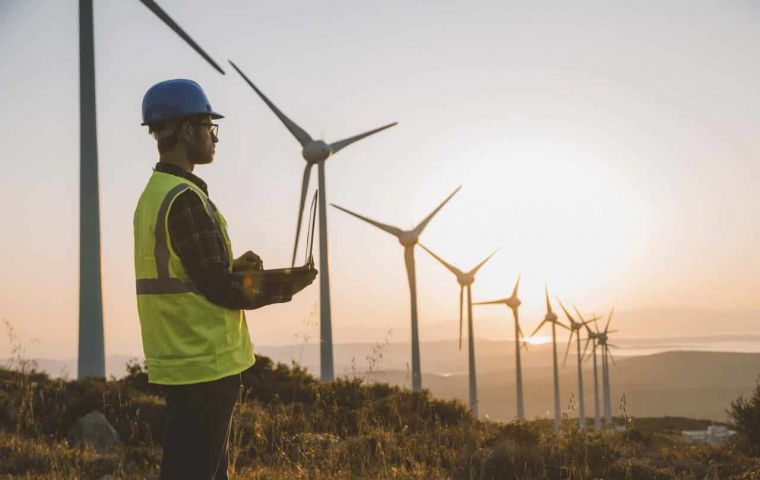MercoPress. South Atlantic News Agency
Wind energy and green hydrogen projects in Rio Grande do Sul target 13% of power demand
 According to Neoenergia, the Águas Claras project includes four wind farms, with a projected capacity to serve 13% of the state’s energy demand
According to Neoenergia, the Águas Claras project includes four wind farms, with a projected capacity to serve 13% of the state’s energy demand The Brazilian state of Rio Grande do Sul has signed a three-year memorandum of understanding with Neoenergia, a subsidiary of the Spanish giant electricity energy corporation Iberdrola, for the development of offshore wind power, plus a project for the production of green hydrogen.
The MOU calls for cooperation in other opportunities related to energy or the electrification of industries linked to the green hydrogen pilot project. In addition, it provides for assessments necessary for the development of the chain value, supply chain and port infrastructure in the port of Rio Grande for the purpose of developing the Águas Claras offshore wind power generation project.
According to Neoenergia, the Águas Claras project includes four wind farms, with a projected capacity to serve 13% of the state’s energy demand. Through the Alternative Energy Sources Incentive Program (Proinfa), wind energy has been growing and consolidating itself as a complementary source for energy supply in Brazil and particularly in the southernmost state of Rio Grande do Sul, neighboring with Uruguay and Argentina.
Currently wind energy accounts for 7.46% of Brazil’s installed electricity generation capacity, which corresponds to 11.5 GW, from 470 wind farms (Aneel). The sector is expanding capabilities every year. In 2005, the installed capacity was 27.1 MW and by 2020, it is projected to reach 17.9 GW (Abeeólica). The Ten-Year Energy Plan (PDE) foresees an increase of 18.4 GW by 2026. Brazil is the 9th country in installed capacity and ranks 5th in the expansion of its installed capacity, among the wind energy producing countries (GWEC).
Rio Grande do Sul installed the first wind park in Brazil, ranks fourth in Brazil in electricity generation capacity from wind, has 1.82 GW installed, distributed in 80 wind farms, and three other parks in the state are under construction. Rio Grande do Sul is considered the Brazilian state with greatest potential for wind power generation.
The Wind Energy Atlas of Rio Grande do Sul was launched in 2014.It included measurements of wind potential and wind regime – of the State and its municipalities - as well as other key information for planning and decision making on new investments. These measurements showed that Rio Grande do Sul is the Brazilian state with the highest wind potential: onshore (103 GW in towers, 100 meters in height and 245 GW in towers, 150 meters in height) and offshore (34 GW in ponds and 80 GW in the ocean) (Atlas Energia Eólica).
Regarding the projects developed in Rio Grande do Sul, it is worth mentioning the Campos Neutrais Wind Complex, the largest in Latin America, with 302 wind turbines, distributed among three wind farms and located in the municipalities of Chuí and Santa Vitória do Palmar, which generates 0.6 GW. Another project that deserves mention is the Honda Energy Wind Farm, in the municipality of Xangri-lá, in the Northern Coast, which has an innovative design. The complex is dedicated to the generation of energy to supply the demands of the automobile plant, research center and headquarters of Honda Automóveis, in Sumaré, São Paulo. In 2016, this business model entirely based on renewable energies resulted in the production of 2,015 cars and kept 12,866 tons of carbon dioxide emissions from entering the atmosphere.
Rio Grande do Sul state Government currently monitors 118 wind farm projects, with potential for generating 2.6 GW. All of these projects have economic and environmental viability. Other factors that benefit the wind sector in Rio Grande do Sul concern proximity to the Argentine and Uruguayan markets and an interconnectivity grid to help balanced and supplied the three markets.




Top Comments
Disclaimer & comment rulesCommenting for this story is now closed.
If you have a Facebook account, become a fan and comment on our Facebook Page!